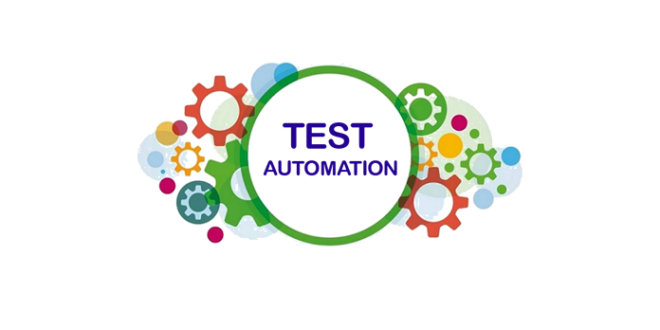Automation Testing Frameworks: Streamlining Complex Testing Circumstances
Automation Testing Frameworks: Streamlining Complex Testing Circumstances
Blog Article
From Manual to Automated Screening: A Comprehensive Overview to Transitioning Efficiently and Properly
In the realm of software testing, the change from handbook to automated processes has actually come to be a significantly important shift for organizations looking for to boost efficiency and precision in their screening methods. As innovation continues to breakthrough, the demand for effective and smooth automatic testing methods has actually never ever been much more important. The trip from manual to automated testing is not without its obstacles, but when come close to purposefully and with a clear plan in mind, the benefits can be substantial - automation testing. In this extensive overview, we will certainly discover vital steps and factors to consider necessary for an effective shift, from the first choice of devices to the combination of automation right into existing process. Stay tuned to discover the understandings that will assist lead the way for a smoother and a lot more efficient testing process.
Benefits of Automated Testing
Automated screening provides many benefits, enhancing performance and accuracy in software development procedures. Automated examinations can be run concurrently on numerous gadgets and running systems, dramatically speeding up the screening phase contrasted to hands-on screening.
Additionally, automated screening ensures a higher level of accuracy in detecting defects. Because automated examinations comply with predefined scripts, human error is lessened, bring about more reliable examination outcomes. Consistency in testing is also boosted, as automated tests carry out the exact same steps precisely each time they are run. This consistency is vital in ensuring that all performances of the software application are extensively checked, lowering the chance of undiscovered pests slipping through to production.
Choosing the Right Tools

To start with, analyze your demands and objectives. Understand the extent of your task, the innovations entailed, and the ability of your group. This evaluation will certainly help you identify the functions and capabilities you require in your screening devices.
Secondly, take into consideration the compatibility of the tools with your existing procedures and systems. Smooth integration with your present software application development lifecycle is vital to ensure a smooth transition to automation.
Additionally, evaluate the scalability and versatility of the devices. As your testing requires evolve, the devices ought to be able to adapt and suit adjustments efficiently.
Lastly, consider the assistance and area around the devices. When executing automated testing, durable support and an active user area can provide useful resources and help. By meticulously thinking about these elements, you can select the right tools that straighten with your needs and established the phase for a successful transition to automated testing.
Composing Reliable Examination Scripts

When crafting examination manuscripts, it is vital to take into consideration the particular demands of the software application being evaluated and ensure that the manuscripts resolve all critical functionalities. Clear and detailed naming conventions for examination scripts and examination instances can enhance readability and maintainability. In addition, incorporating error handling devices within the examination scripts can help in determining and addressing problems promptly.
Furthermore, arranging test manuscripts into modular parts can improve reusability and scalability, lowering redundancy and enhancing effectiveness in test manuscript maintenance. Normal evaluations and updates to check scripts are essential to equal developing software application demands and performances. By complying with these principles, testers can develop durable and reliable test manuscripts that add dramatically to the success of automated testing processes.
Integrating Automation Into Workflows
Effective integration of automation devices right into existing workflows streamlines procedures and improves productivity within software growth cycles. When integrating automation into operations, it is important to recognize repetitive tasks that can be automated to conserve time and minimize human mistake. By effortlessly integrating automated screening devices like Selenium or Appium into the software program growth lifecycle, teams can achieve faster feedback on code changes, leading to quicker pest discovery and resolution. This integration enables constant screening throughout the advancement procedure, guaranteeing that any concerns are determined beforehand, leading to greater software application top quality. Additionally, automation can be used to cause examinations immediately after each code devote, giving immediate recognition and maximizing testers to concentrate on even more complex circumstances. Correct integration of automation devices calls for collaboration between advancement, screening, and operations groups to develop a unified workflow that optimizes efficiency and efficiency in providing high-quality software items.
Making Certain a Smooth Transition
Efficiently transitioning to automated testing includes meticulous planning and view website mindful implementation to decrease interruptions and make best use of performance in the software application growth process - automation testing. To ensure a smooth shift, it is vital to start by performing a complete analysis of the current testing procedures and recognizing areas where automation can bring one of the most substantial benefits. Involving with all stakeholders at an early stage at the same time, including programmers, testers, and task supervisors, is vital for amassing assistance and buy-in for the automation campaign
Interaction is crucial during this shift phase. Clear communication of the goals, benefits, and assumptions of automated testing assists to handle any type of resistance or worries that may occur. Additionally, providing adequate training and sources for employee to upskill in automation tools and strategies is crucial for ensuring an effective transition.

Verdict
To conclude, transitioning from manual to automated screening uses numerous advantages, including boosted effectiveness and reliability. By choosing the proper devices, composing efficient test scripts, and integrating automation flawlessly right into operations, companies can guarantee a smooth and effective transition. It is necessary to embrace automation as a useful asset in software application screening processes to enhance overall high quality and productivity.
In the realm of software application testing, the shift from manual to automated procedures has become a progressively important change for companies looking for to boost performance and precision in their testing techniques. Automated examinations can be run simultaneously on numerous devices and running systems, considerably speeding up the screening stage compared to manual testing. Consistency in screening is likewise enhanced, as automated tests execute the very same steps specifically each time they are run.To guarantee the successful implementation of chosen testing devices, the production of efficient test scripts plays a vital role in validating the functionality and performance of automated processes - automation testing. By following these principles, testers can create durable and effective examination scripts that add dramatically to the success of automated testing procedures
Report this page